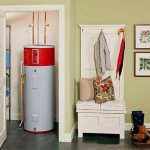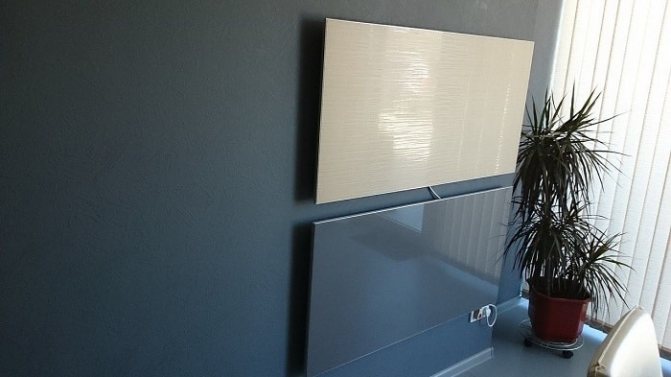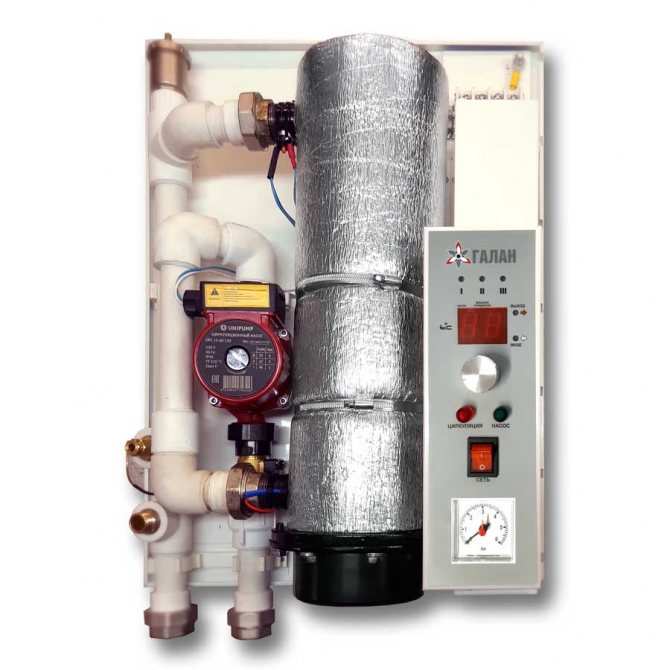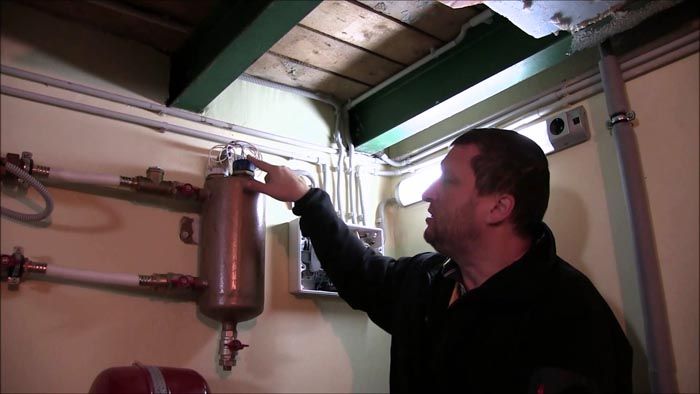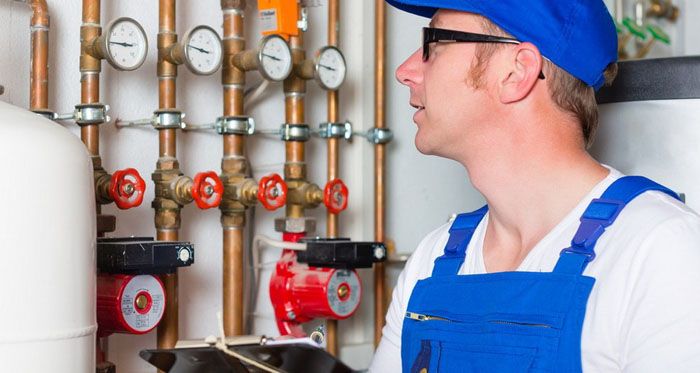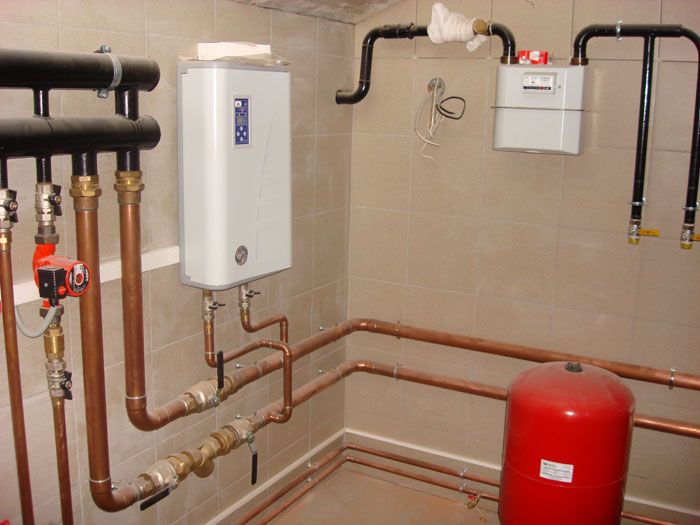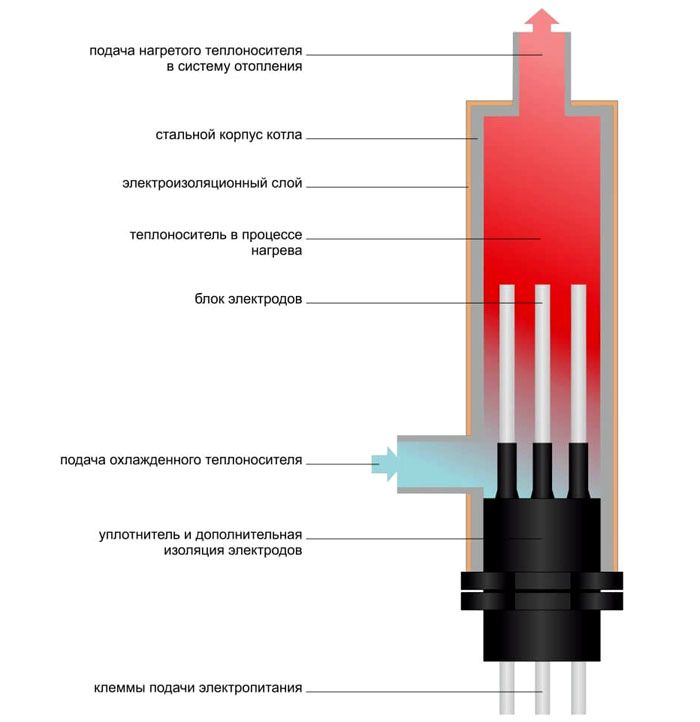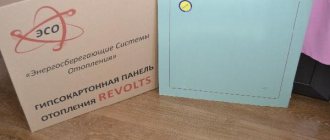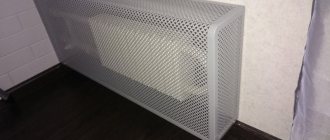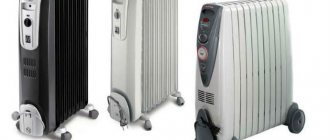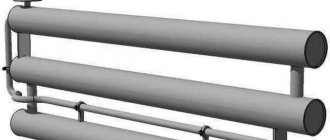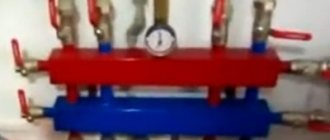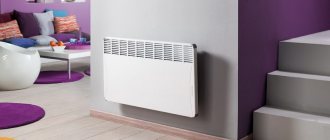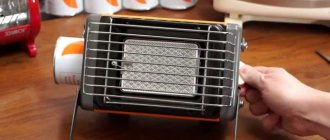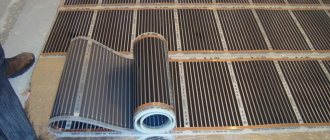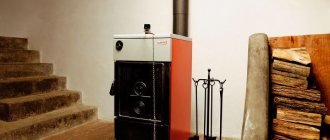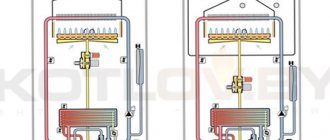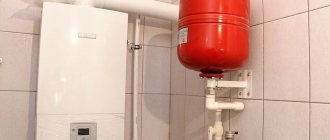How to choose the right economical electric boiler
To choose the right model when buying, you should pay attention to the following nuances:
- unit dimensions and compliance with the selected installation area;
- lack of vibration during operation;
- the presence of intelligent automation;
- efficiency of the system. To reduce the cost of electricity consumption, the possibility of adjusting the temperature regime must be present;
- the ability to install additional devices to control the temperature in each room.
Important criteria are the cost of the equipment itself and its installation.
If ease of maintenance and low price are important to you, then you should pay attention to the heating element boiler. Heating elements will have to be changed every 5 ÷ 10 years.
The most compact devices are electrode and induction. Induction units can work with oil products and with any other coolant. Electrode boilers are more demanding in operation.
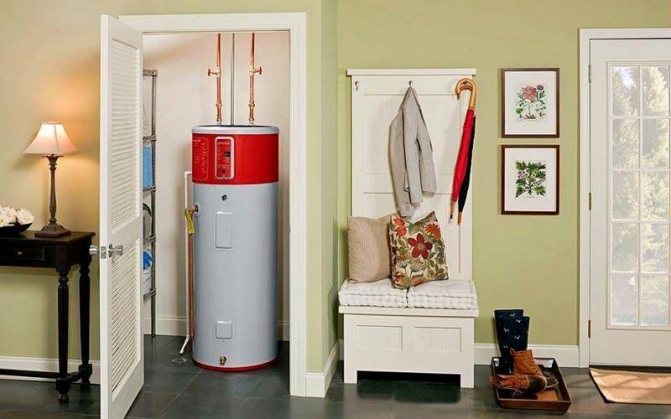
The electric boiler is recommended to be installed in a separate room.
Benefits
Energy efficient heating equipment is becoming more and more popular. This happens, first of all, because the population today has to reduce the consumption of fuel resources, taking into account the increasing tariffs for their use every year. During the Soviet period, few people were worried about this problem, since the cost of the same electricity was cheap. Under these conditions, citizens are trying to be more prudent, and manufacturers help them save money by creating devices with less fuel consumption, while maintaining comfortable temperature conditions.
For energy-efficient electric boilers, additional benefits are:
- compactness;
- aesthetics;
- the possibility of installation in living rooms, and not just in separate rooms;
- cleanliness - absence of carbon monoxide and ash;
- the uselessness of the chimney device;
- noiseless operation;
- minimum maintenance costs;
- maximum comfort in operation;
- Fire safety.
Energy efficient boilers really deliver real energy savings. And this happens due to the special design of the main components of the equipment and the physical and chemical reactions taking place inside the circuit. Such electrical appliances are allowed to be installed not only on new, but also on previously installed systems.
Until recently, gas boilers for autonomous heating systems were consistently considered the most profitable. But the highways, unfortunately, are not laid everywhere, and even at peak loads, the pressure of blue fuel in the networks can drop significantly, which leads to poor heating of the premises. Power surges, on the other hand, do not have such a detrimental effect on energy-saving electrical appliances. In addition, a permit for their installation is not required to be taken, as when installing gas boilers. By the way, the licensing procedure can take quite a long time, and end with a negative result.
Main technical parameters of energy saving electric boilers
There are several criteria to consider, you do not know which is the most economical electric boiler to choose for your home. Here they are:
- unit dimensions and installation area;
- the boiler must be equipped with an automatic system that saves energy. In this case, as much heat will be produced as required for a particular room;
- the functionality of the device is the rapid heating of the liquid that passes into the chamber. This parameter determines the efficiency of the unit;
- the manufacturer's guarantee is the efficiency and reliability of the equipment. Depending on the manufacturer, this period can last up to 30 years;
- manufacturers can be not only foreign, but also domestic.
Power is an important indicator. Depending on it, the connection can be carried out both to a 220 V source and to 380.
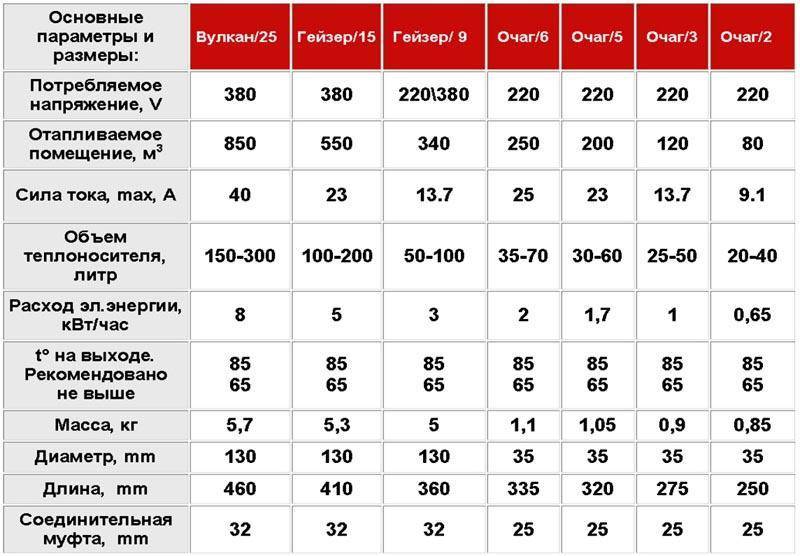

Example of technical characteristics on selected models
Types of energy-saving heaters for summer cottages
The choice of efficiency indicators for energy-saving heaters for summer cottages and small cottages depends on the type of equipment, as well as the principle of operation of such a device.
Wall mounted
In most cases, the most convenient are wall heaters, which differ in shape, size, power, weight, heating method and additional options.
Depending on the heating method:
- with heating the room by means of thermal radiation;
- with heating the room by means of convection.
Depending on the design features and the type of heating elements:
- heaters represented by lamps with tubular heating elements;
- heaters represented by panel heaters;
- heaters, represented by heating elements of the film type.
Depending on the ability to regulate the power and temperature indicators in the room:
- with the presence of a thermostat;
- without a thermostat.
All types have certain positive qualities, but they are also not devoid of some disadvantages that must be taken into account in the selection process.
Ceramic
They belong to the category of universal and economical devices used as additional or local heating elements, as well as in the form of the main heating system. A special feature is the economy of energy consumption, thanks to a heating element with enormous heat dissipation.
The temperature regime is adjustable. Such devices do not dry out the air, are environmentally friendly and meet all safety requirements. All ceramic heaters differ in the type of attachment, and can be wall, table and floor.
Infrared
The use of such equipment is one of the most efficient and affordable heating methods. Infrared devices differ not according to the principle of operation, but depending on the type of waves:
- longwave;
- medium wave;
- shortwave.
By the type of energy carrier used, all infrared heating equipment is represented by gas and electric models. Depending on the parameters of the wavelength, the power parameters depend. Long-wave equipment belongs to the category of low-temperature and is designed for temperature indicators in the range of 45-300 ° C ... In addition to efficiency, the advantages include "0" protection class, which allows the use of equipment when heating wooden buildings, as well as the presence of a temperature controller and noiselessness.
Tenovye
Modern heating elements are most often represented by powerful mobile heating units, designed specifically for heating temporary structures and awnings. The advantages of such equipment include:
- recirculation type of work;
- the presence of a supply ventilation system;
- the ability to work on diesel fuel and kerosene;
- the possibility of a "cold" start at a temperature of 40 ° C;
- high level of useful heat output;
- spacious fuel tank, which is designed for at least twelve hours of trouble-free operation.
The equipment is mobile, therefore it can be equipped with a heavy-duty wheel system. Ease of use is also an advantage.
How to install a heater (video)
Quartz
Quartz heaters, popular in our country, have proven themselves well as equipment for houses, summer cottages and cottages. This type of equipment is quite new, but due to a number of advantages it has become very popular. The main advantages of quartz heaters are as follows:
- absolute fire safety and environmental friendliness;
- lack of excessive drying of air in the room;
- the possibility of equipment oxidation is excluded;
- the solidity of the structure has a positive effect on the service life;
- with massive dimensions, a rather restrained and neat design is characteristic;
- rapid heating to the required temperature indicators.
Consumers have the opportunity to purchase equipment that regulates manual or automatic operation. The presence of modern automation contributes to the economical consumption of electricity. Especially popular are "TeploPlit" quartz heaters and heating systems based on them, which are used to equip private houses and summer cottages, apartments and office premises.
New type
In recent years, the use of devices of a new type has become very popular, which successfully combine high efficiency, modern design and low energy consumption:
- Micathermic infrared devices with heating elements in the form of plates, the end part of which is insulated with mica. The most significant advantage is the possibility of real energy savings of 30-35%;
- ceramic panels with various options for heating elements. Ceramic panel heating equipment, in addition to efficiency and high heat transfer, is able to very organically "fit" into any style of interior;
- infrared mats and films are the most convenient equipment in operation and are favorably distinguished by their versatility and ease of installation. Such heaters differ in power indicators, section dimensions, connection method and a number of other parameters;
- convector electric heaters belong to the category of the devices that are easiest to install and operate, but in terms of efficiency they are slightly inferior to infrared equipment;
- inverter electrical equipment, most often used as an air conditioner, but with a "heating" mode. As the main source of heating for private houses or summer cottages, such modern devices are used extremely rarely, but as an additional means of ensuring a comfortable stay, they are quite popular.
Depending on the purpose for which the equipment is supposed to be used, taking into account the area and other parameters of the room, it is necessary to correctly select the heater.
Heating element
The most popular type of boilers due to its compactness, low cost, the ability to work with any coolant and ease of operation. Heating elements electric boilers are equipped with a protective block that allows the boiler to work in automatic mode.
Consider their structure and principle of operation. Main working blocks:
- Heat exchanger - a tank with heating elements (heating elements) fixed in it;
- Circulation pump (creates the required pressure in the system);
- Air valve;
- Heating agent pressure sensor with safety valve;
- Control unit with temperature sensors and indicators;
- Expansion tank (only for energy saving models).
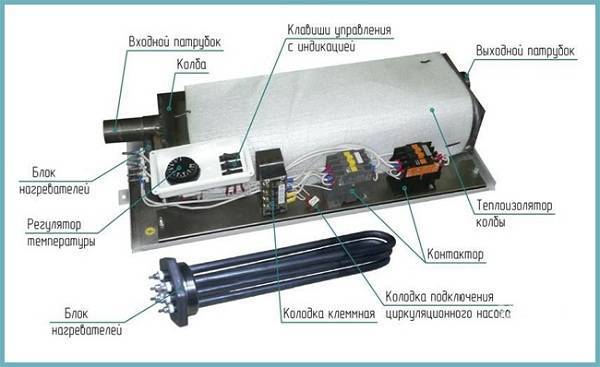

Diagram of a heating element electric boiler
The coolant enters the heat exchanger, where it is heated with the help of heating elements (TENs), and then is distributed to the heating system.The pressure required for the circulation of the coolant is generated by a circulation pump. When the maximum pressure mark is exceeded, which is controlled by the sensor, the safety valve is triggered. To protect the coolant from boiling, the system is equipped with an emergency temperature sensor that turns off the boiler when the temperature reaches 95 degrees. It is possible to regulate the power of the boiler by turning on / off the heating elements.
With the help of a control unit equipped with thermostats, control over the entire system is carried out in automatic mode. Depending on the boiler model, temperature sensors are of two types - controlling the temperature of the coolant or the temperature of the air outside the installation. The second type of sensors is located outside the boiler. When the coolant (or room temperature) cools, the circulation pump is turned on, then the coolant is heated to the set temperature, supplied to the system and the boiler is turned off.
A little more complicated is the system with an expansion tank, which allows you to accumulate the heated coolant and gradually use it in the system, without restarting the boiler. This saves a lot of energy, but requires additional tank space.
The main disadvantage is that when using a coolant with hardness salts (hard water), scale gradually forms on the heating elements. With a scale thickness of 2-3 mm, the heat transfer of the heating element sharply decreases, and its efficiency is about 30%. At the same time, energy consumption remains at the same level, which leads to excessive consumption of electricity.
Heating system on quartz heating elements
Modern technologies began to be used already in the new century. On the basis of these heating elements-panels, an energy-saving heating was created - a system of local autonomous heating of the room.
Main elements
The system includes:
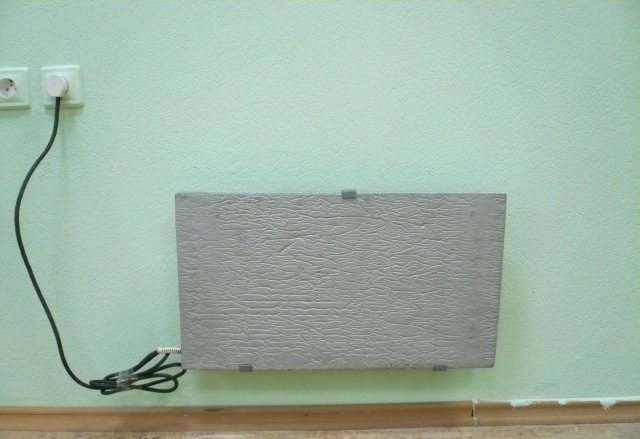

- electric heating elements of MKTEN type, the temperature of which reaches 85 - 95 ° C;
- air temperature sensors outside the building and inside each of the heated rooms of a private house;
- heating element control circuits.
Benefits
Energy saving and high efficiency of this heating method are based on the fact that the duration of the system operation per day varies from 3 to 10 hours. This time is significantly reduced with proper insulation of a private house. Savings - up to half the cost of a traditional system for electric heaters.
Such significant energy savings can be achieved due to the following advantages of monolithic quartz heating elements:
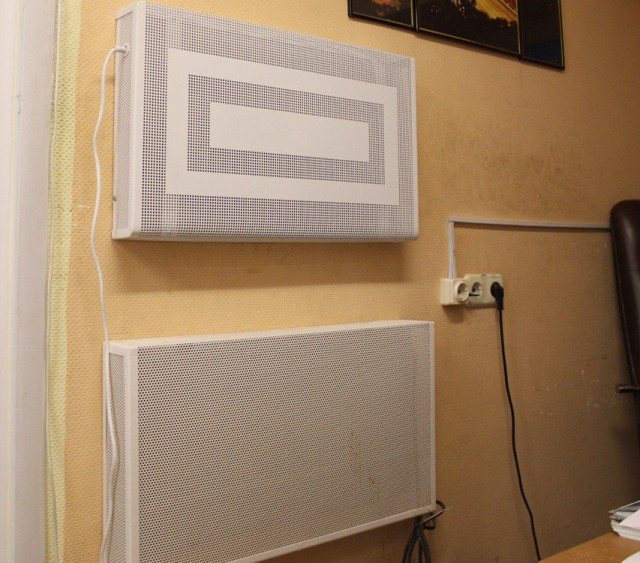

- low cost - the heating wire is not wound into a spiral, the metal tube is not used, is not cut, does not bend, etc.;
- low heating of the wire and complete isolation from oxygen gives a long service life when heating a private house;
- no maintenance needed;
- electrical and fireproof technologies provide surface heating below the ignition temperature of materials in the house;
- simple installation, etc.
Features of installation of electric boilers
High-quality installation of electrical equipment requires special materials and tools. These are electrical wires, cables, fasteners, metal pipes and fittings. The factory unit usually comes with a special installation diagram.
Alternatively, the device can be installed in a separate room, where children or strangers will not enter. Heating elements can also be installed in the kitchen.
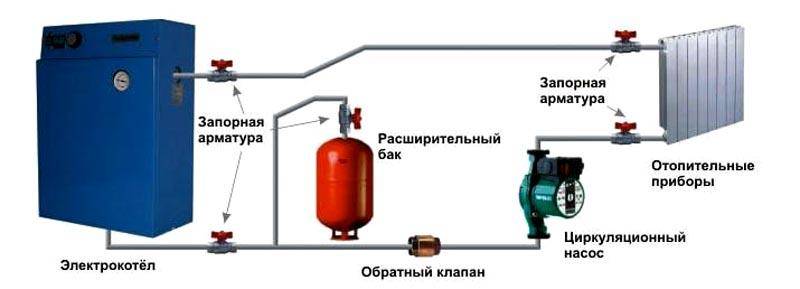

Equipment installation diagram
It should be mounted so that there is free space on the sides and above the top. The following distances must be respected:
- to the ceiling at least 80 cm;
- up to the floor covering at least 50 cm;
- to the surface of the walls at least 5 cm.
Before installation, you need to do the markup.The device must be placed in a horizontal position
Before choosing a cable size, it is important to determine the capacity of the equipment. When installing floor-standing boilers, you can use a standard stand
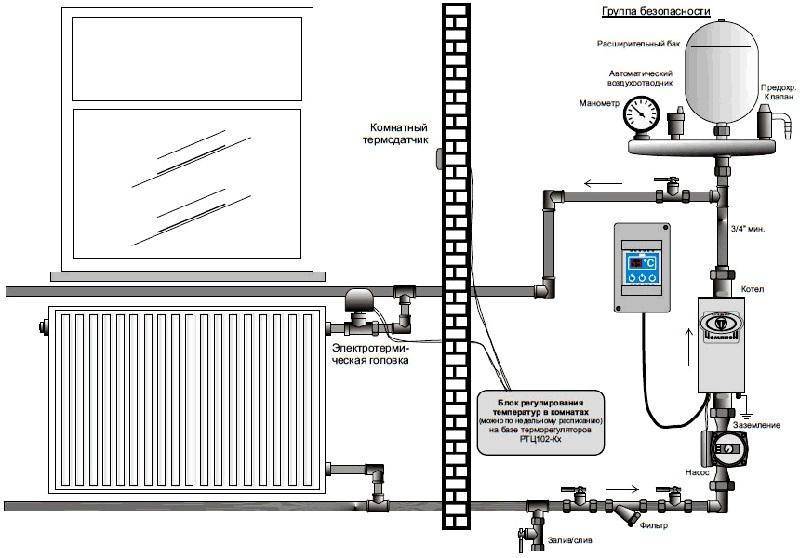

Installation with safety group
During installation, the following safety rules should be observed:
it is important to turn off the electricity; do not install the device near a water supply line; it is necessary to observe the recommended distances between the device and different surfaces; the boiler must be connected to an earthing loop; the equipment must be mounted on a wall made of non-combustible materials.
And the connection to the heating system is carried out as follows:
- pipes to the return and flow pipes of the heating circuit are fixed to the inlet type branch pipes. They are connected using ball valves;
- a mud filter and a membrane-type expansion tank are mounted on the return line.
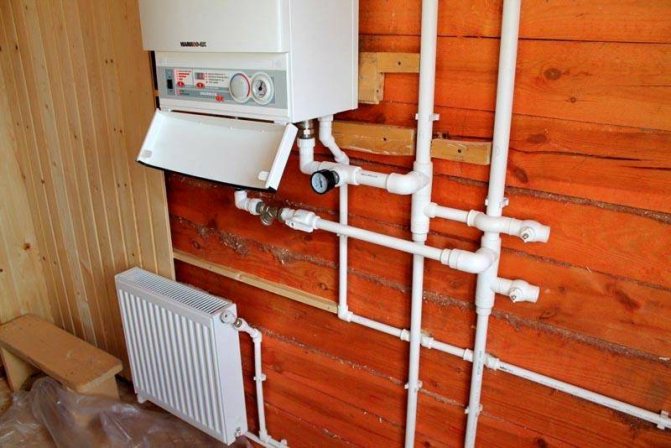

Installation in a private house
Installation of an induction or electrode boiler is carried out using a centrifugal pump piping and a safety group. In some cases, an electric boiler is used as an additional device together with a solid fuel unit.
An important step is also connecting the equipment to the electrical network. It is imperative to take care of grounding.
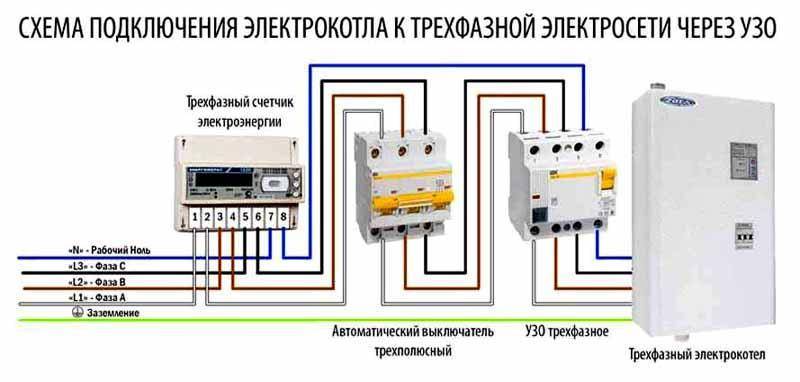

Electrical connection option
Overview of the main manufacturers and models of energy-saving electric boilers
Let's take a look at the major manufacturers of energy efficient equipment.
Galan
Galan is a Russian company that produces heating electrical installations for residential and non-residential premises. The company was established in 1994. It produces energy-saving boilers of electrode and heating elements, automation devices and a ready-made coolant. The company produces all electronic controls independently.
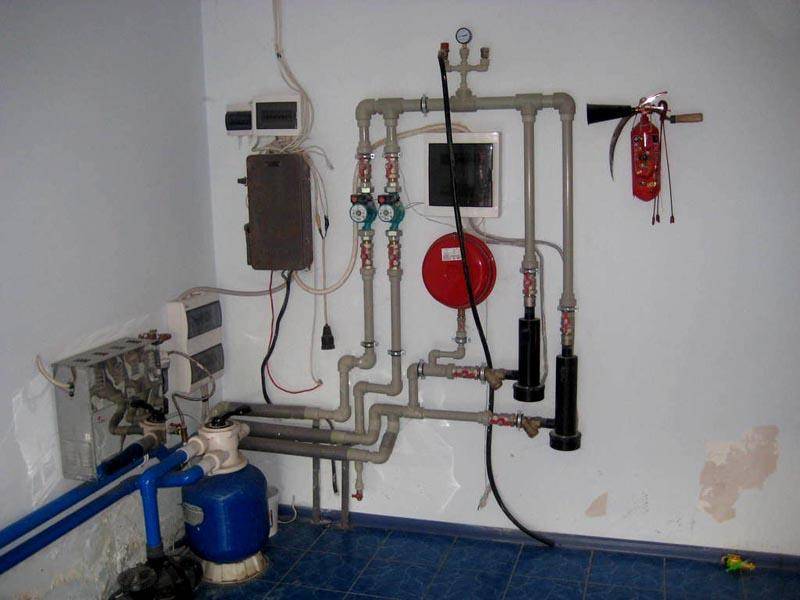

Galan model connection
Such equipment allows you to set a constant temperature and maintain it. In boilers of this manufacturer, antifreeze is used as a coolant. Careful handling is necessary when filling such a liquid, as it is quite aggressive. The most popular models include "Geyser", "Ochag" and "Volcano".
The units have the following advantages:
- high quality level;
- small size;
- practicality and reliability
Savitr
occupies one of the leading positions in the electric heating systems market. It not only manufactures equipment, but also develops innovative devices. This brand specializes in the production of units with a capacity of 4 to 240 kW.
All boilers are equipped with switching power supplies and reliable operation in case of voltage drop. The presence of a built-in controller allows connecting a GSM module. The products are represented by a large number of models of various configurations and various power ranges. The company offers customers an effective warranty and post-warranty service.
Savitr offers boilers for heating large rooms. Models are great for northern regions.
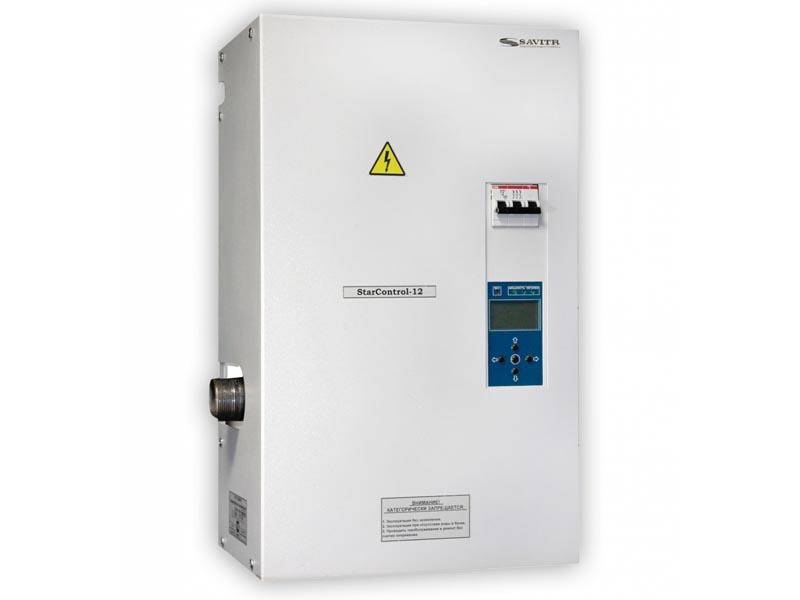

Reliable equipment
Before installing the equipment, it is necessary to test the quality of the pipes. They should be free of rust.
Energolux
Devices from Ukraine are also popular. The equipment has a function such as climate control. Models are available with wireless temperature sensors and a range of different programs. This technique is not recommended if voltage fluctuations occur frequently.
It is worth noting such models of energy-saving equipment as Elite and Premium.
Related article:
Simple DIY heater
How to make a simple heater from a pipe and a heating element for heating a garage or a change house.
When there is a need to quickly make a simple, cheap heater from available tools, you can use this design.
A homemade heater gives out enough heat to heat a small room, like a change house or garage.
Heater circuit.
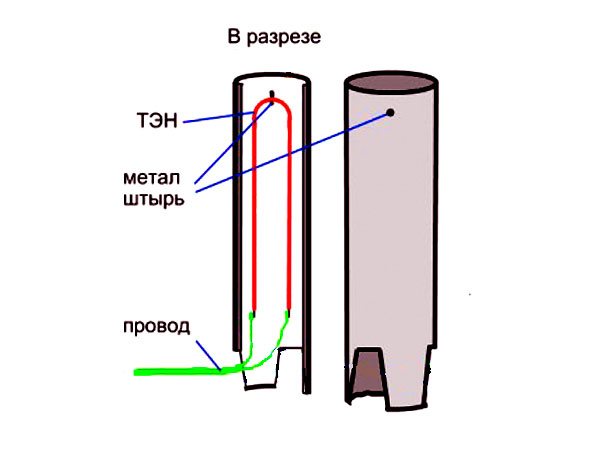

For the manufacture of a heater, you will need a closed air U-shaped heating element of the required power, usually heating elements for 1 - 2 kW are used. You can use two heating elements of 1 kW at once, in order to regulate the power of the heater, it is enough to connect one or two heating elements to the network. You can buy a closed air heater at any hardware store.
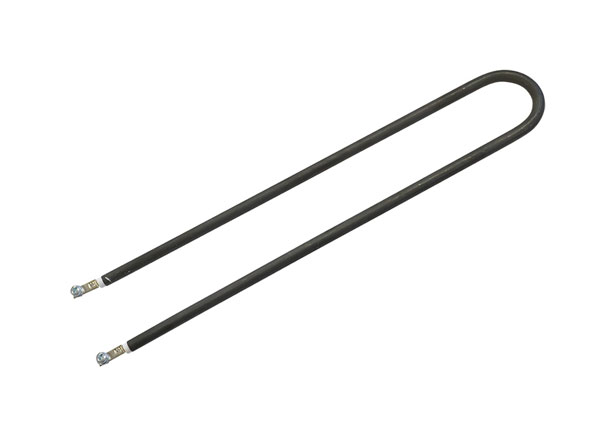

As a case for the heater, you can use a metal or asbestos-cement pipe with a sufficient diameter so that the heating element can easily fit into it.
The length of the pipe should be about 20 cm longer than the length of the heating element. In the lower part of the pipe, you need to cut out the legs like a dovetail with a grinder. The legs are needed to ensure air circulation in the pipe.
IMPORTANT!!! If you use an asbestos-cement pipe, you must wear a respirator when working with a grinder, asbestos dust is very harmful to human health !!!
Now you need to hang a heating element in the pipe, for this we drill a through hole in the upper part of the pipe and insert a metal pin, a U-shaped heating element is suspended on the pin. In turn, we connect a wire with a plug to the contacts of the heating element.
If the heating element is powerful (more than 1 kW), then when the heating element is turned on through the plug into the outlet, the contacts will constantly burn, and the plug will heat up and spark over time, a more reliable option is to connect the heating element to the 220V network through a batch machine, so it is much safer.
A home-made heater is ready to use, its principle of operation is extremely simple, cold air enters the pipe through the lower holes, it is heated by a heating element in the pipe and already hot comes out through the top of the pipe.
Instead of a pipe, you can use a sheet of perforated metal, it is enough to twist it into a cylinder and connect the edges into a lock.
It is important that the heater is stable and not topple over.
This home-made heater is quite safe, since a closed heating element is used here, but you still need to follow fire safety rules and, first of all, do not place the heater near flammable objects. Like any heater, you cannot leave it unattended for a long time.
How to choose an economical electric boiler
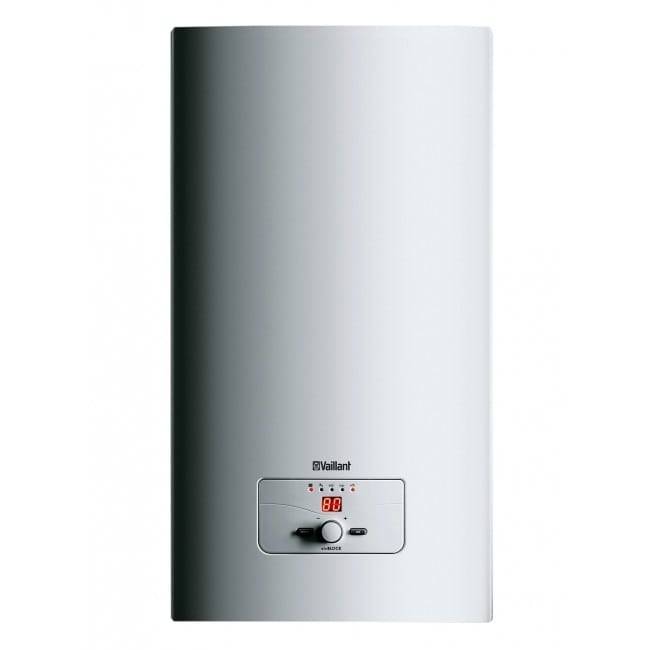

When buying a device, you need to pay attention to:
- Boiler dimensions and their correspondence to the area of the future installation site.
- Environmental safety of the device.
- The need to supply additional paths for the removal of products from the boiler or ventilation.
- Design.
- No vibration during operation of the Pibor and its complete noiselessness.
- Boiler performance. It should be appropriate for the size of the system in which it will work. A low-power device will quickly fail.
- Safety and efficiency of the device.
- Intelligent automation.
- The rate of heating the liquid entering the boiler chamber.
- Energy consumption for a month of continuous operation of the device.
- Availability of additional functions and modifications.
- Manufacturer's warranty and quality certificate.
Types and their features
Types of electric economical boilers:
- Electrode.
- Ionic.
- Ion exchange.
The principle of operation is similar for all types of economical devices, only the process of converting electricity into required heat is different.
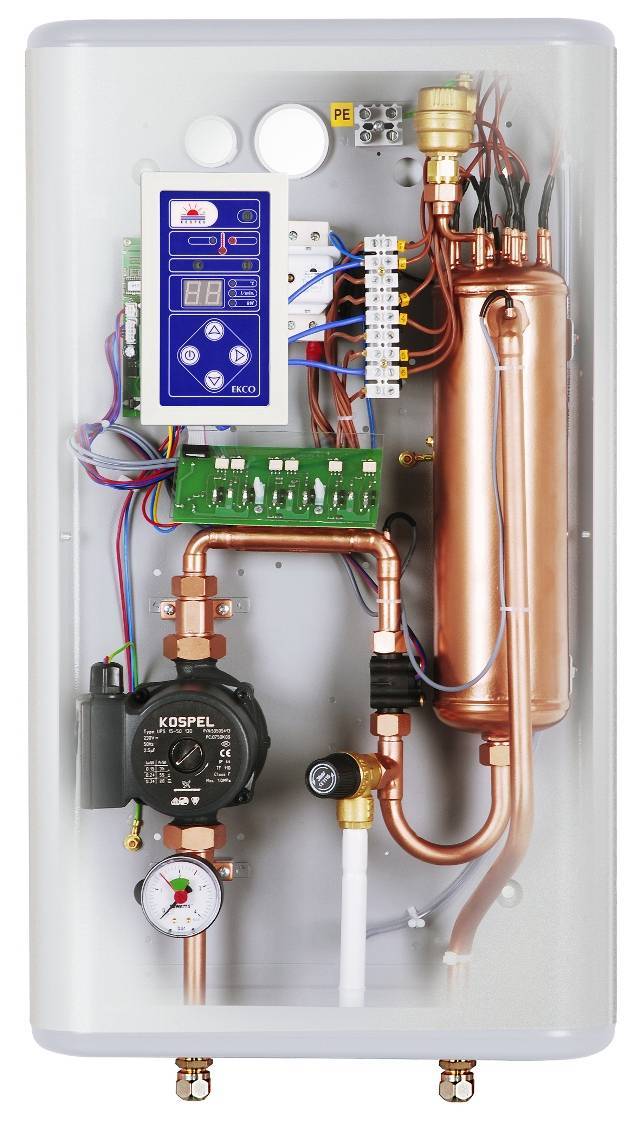

Energy savings are achieved through:
- Heating inertia reduced by an order of magnitude.
- The special physics of converting electricity into heat.
- Smooth start.
- The use of automated control of the temperature of the coolant and air.
- Two-pipe system (not to be confused with two-circuit).
- Constructions made of modern materials.
- Increased operating efficiency, which reduces power consumption if the system uses high-quality radiators.
Heating devices powered by electricity are:
- Single-circuit.
- Double-circuit.
A double-circuit boiler has two functions: heating the coolant and instantaneous heating of water for domestic purposes. If the device is used for two purposes at once, the energy consumption does not increase during the heating season.
Energy-saving boilers are divided according to the type of fastening during installation:
- Wall mounted.
- Outdoor.
Requirements for modern boilers
When choosing heating equipment, consumers pay attention to it:
- environmental friendliness;
- safety;
- functionality;
- profitability during operation;
- ease of maintenance.
All of the above requirements are met by energy-saving heating boilers operating on electricity. Such devices compare favorably with their gas counterparts, which until recently were considered the most optimal option for private households. The disadvantages of electrical appliances are: their dependence on an uninterrupted supply of energy resources and the high cost of equipment, which, however, tends to pay off quickly.
It is recommended to entrust the installation of equipment to specialists, since illiterate connections can lead to serious damage. It will not be superfluous to decide on the technical possibility of connecting an energy-saving boiler to the existing electrical wiring. It is possible that a separate cable will have to be laid to the device and a grounding loop will have to be made.
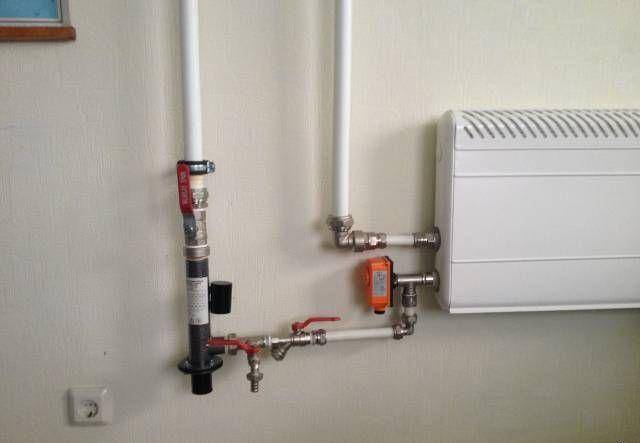

Single-circuit and double-circuit energy-saving electric heating boilers
Depending on the purpose, the 220 V energy-saving electric heating boiler can be of two types. Single-circuit models are used only for heating. In this case, the coolant circulates through a closed system and radiators. Dual circuit designs are more practical. They not only heat the room, but also supply it with hot water. In such equipment, electrodes that transmit electric current to the coolant act as heating elements. Electrode double-circuit boilers most often have compact dimensions and can be hung on the wall.
For heating a house of 100 square meters or more, a single-circuit electric boiler is often used.
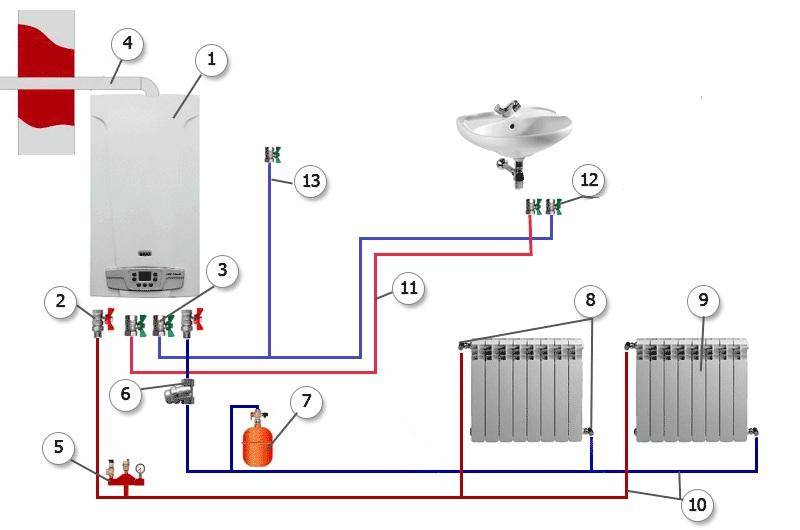

Scheme of operation of a double-circuit unit
Wall-mounted electric heaters: overview of models and prices
Let's get acquainted with the most frequently purchased models of wall-mounted appliances, with their main characteristics and average prices.
- Bimatek PH400... A device with a capacity of 1.5 kilowatts, capable of heating a room with an area of up to 17 m 2. The average market cost is about 5.8 thousand rubles.
- Bork R700... A higher quality device, which, nevertheless, has a similar power. Designed for a maximum of 20 m 2, equipped with a "Multimica" heating element. The average cost is about 12 thousand rubles.
- Ballu Camivo Eco WEIGHT / EM-1000... Quite good equipment with a capacity of 1 kilowatt, designed for rooms up to 15 m2. Efficiency is achieved through the use of a special heating element "Double Strength". Average cost - 1.65 thousand rubles.
- Bork R703... An excellent heater, functioning according to the Magmatic technology and having a capacity of 1 kilowatt. Designed for an area of up to 30 m2, price from 9.9 thousand rubles.
As a conclusion
Electric wall heaters are considered fantastic equipment. Why? First of all, due to the high efficiency, which can be partially determined by the length of the device. Installed at a height of 30-50 centimeters from the floor, they do not cause any inconvenience to the owners and fit perfectly into almost any interior. What quality equipment should be? He must have:
- an operational period of at least 25 years;
- affordable price;
- high productivity, but without oxygen combustion;
- fast warming up of the room;
- low noise performance;
- high efficiency (from 95%).
That's all. Choose only the best and warmest winters for you!
Video - Choosing a wall heater
v-teplo.ru
Coolant composition
The efficiency of the unit depends on the electrical properties of the fluid. Electrical conductivity is not provided by the water itself, but from the salts it contains.
In accordance with the instructions of the manufacturers, drinking water is used in accordance with GOST 51232, the resistance is 1300 Ohm per cubic centimeter. In practice, it also depends on the characteristics of the electrical network.
The required current parameters are indicated in the boiler passport. Deviations from these figures are compensated by the composition of the water:
- at a higher current, distillate is added to the drinking water;
- if it is too low, the amount of salts is increased. You can use baking soda, 30 grams per 100 liters.
Sometimes manufacturers allow the use of non-freezing liquids as a coolant. Their physicochemical characteristics are different, usually it is necessary to dilute the original composition with distilled water.
The design of the system (characteristics of the pump, pipes, expansion tank, etc.) also differs from the usual water circuit.
The main types of energy-saving boilers
Consider the main types of energy-saving boilers:
Heating elements boilers are equipped with a tubular heating element that heats the water when driving;
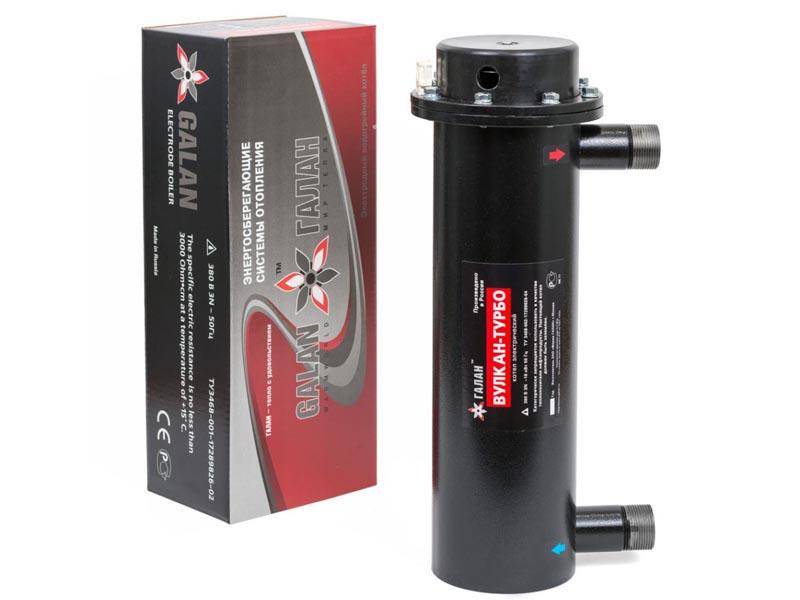

Heating element new model
induction work thanks to the principle of magnetic induction. In this case, a ferromagnetic alloy is heated inside the coolant;
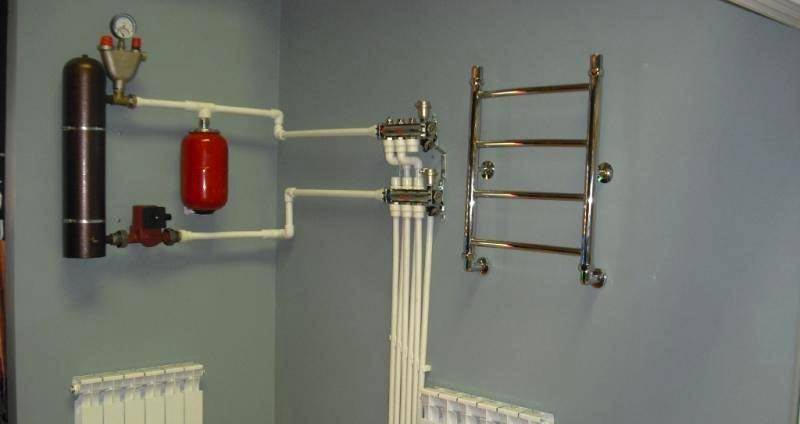

Induction design
- the electrode unit heats up when current passes through the electrolyte. In this case, the molecules are transformed into anions and cations. As a result of this process, thermal energy is released;
- molecular models are new to the boiler industry.
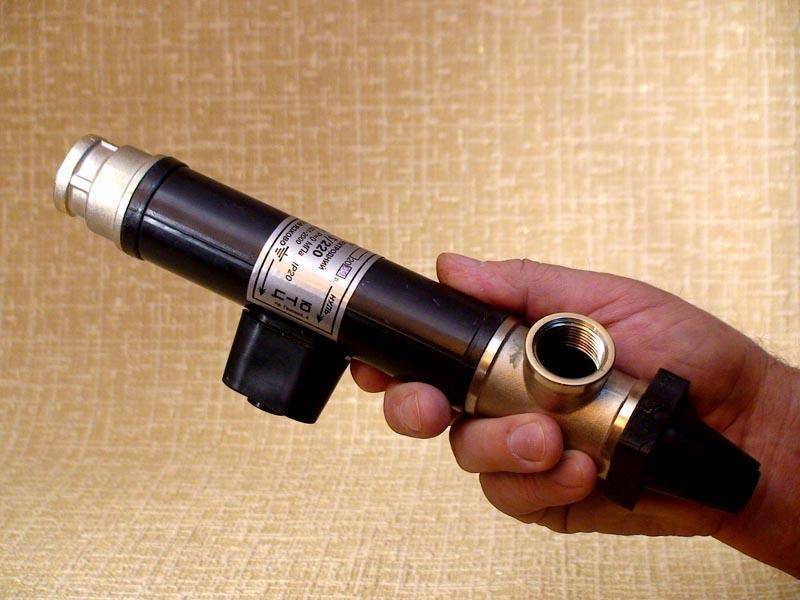

Electrode device
You can use any option to heat your home with electricity. Energy savings are cheap under the following circumstances:
- by reducing the inertia of heating;
- with a smooth start;
- when using automatic temperature control;
- due to the use of a two-pipe system with high-quality radiators.
Characteristics and advantages of energy-saving home heaters
Modern electric heaters are practically irreplaceable things. Space heating by means of such equipment can be performed in different ways. Today, there are three main methods of heat transfer:
- natural convection method;
- method of thermal ventilation;
- method of long-wave radiation.
Convection is a kind of mixing of air masses, as a result of which the lighter warm air moves up, and the heavy cold air goes down. A significant part of the equipment operating on this principle has a radiator design.
The principle of thermal ventilation is based on the forced supply of warm air masses and is widely used in equipment such as heat guns or heat fans. The design feature of such devices is the presence of a fan and a heater. Forced air is passed through the heating element, and after reaching the desired temperature, it is released into the room. Recently, combined convection-type electric heaters equipped with a fan have become widespread.
A feature of long-wave radiation heaters is the effective heating of surfaces in the room., which allows the transfer of thermal energy to the air. In such designs, the heating element can be a halogen, quartz or carbon lamp.
Benefits
SLO has high physiological properties.Low-temperature film electric heaters have a maximum surface temperature of + (40-45) ˚С, which provides a soft long-wavelength infrared heat flux radiation. These rays do not heat the air, leaving its moisture content natural. They heat objects, floor, ceiling. In this case, the speed of movement of convective flows decreases by an order of magnitude. Getting on the human body, these rays activate the peripheral circulatory system of a person, which is the reason for the onset of a sensation of thermal comfort 2-3 ° C earlier than with convective heating. The rays emitted by heaters are the most useful part of the solar spectrum. They compensate for the "solar hunger" that occurs in the autumn-winter period in the Ural-Siberian region.
Confirmation of the positive physical properties is the information that such devices are used by British doctors to treat herpes, remove wrinkles on the face and for other cosmetic purposes. The high operational properties of the SLO are determined by the service life - more than 50 years. Almost no maintenance costs are required. The simplicity of the installation technology is provided by the absence of metal-intensive structures.
The high design potential is ensured by the fact that the radiant heat generators located on the ceiling can be covered with any elements of the ceiling design. The presence of the heating system is "issued" only by programmable regulators located on the walls. The innovation process both in the Russian Federation and abroad is mainly associated with the expansion of the use of natural gas, the installation of autonomous boiler houses, the use of radiant gas systems. The use of electricity is limited by its high cost, which is objectively manifested if electricity is used as fuel (electric boilers, electric radiators, electric panels).
The innovativeness (novelty) of the process under consideration is determined by the following components:
- The use of a radiant film electric heater that converts electricity into a stream of soft infrared radiation, which has physiological properties favorable to humans.
- The use of a regulator that provides a high-temperature regime (20 ° C or other required temperature) only when people are in the room.
- The use of the thermophysical properties of the building corresponding to the modern SNiP, which allow the formation of pauses in the consumption of electricity.
In essence, this is heating of a new level. One of the main advantages of the SLO is the practical absence of operating costs and a long service life - up to 50 years.
The lineup
What do manufacturers offer today? The assortment is actually large, therefore, first of all, it is necessary to take into account some factors: the object and purpose of heating, the size and shape of the room, the features of the interior of the room, as well as the duration of the heater's operation, are taken into account.
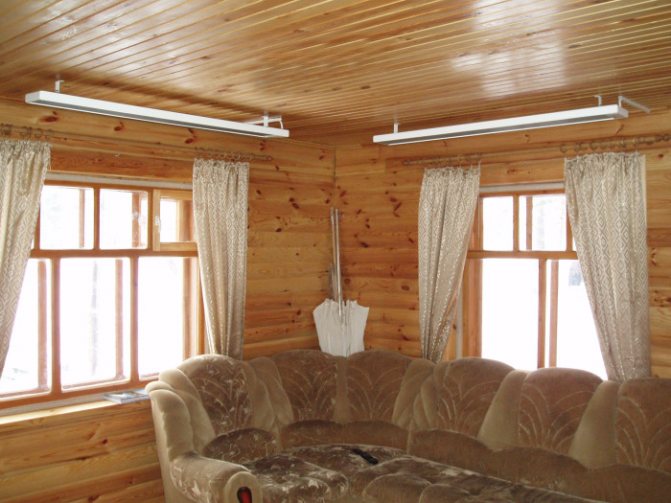

If we carry out the separation according to the principle of operation, then all heaters are divided into several types:
- oil radiators;
- convectors;
- fan heaters;
- infrared heaters.
Oil radiators
Today it is the most popular heater. Its construction consists of a metal body filled with mineral oil. A heating element is installed inside, with the help of which the oil heats up and transfers its heat to the body, which, in turn, to the air in the room.
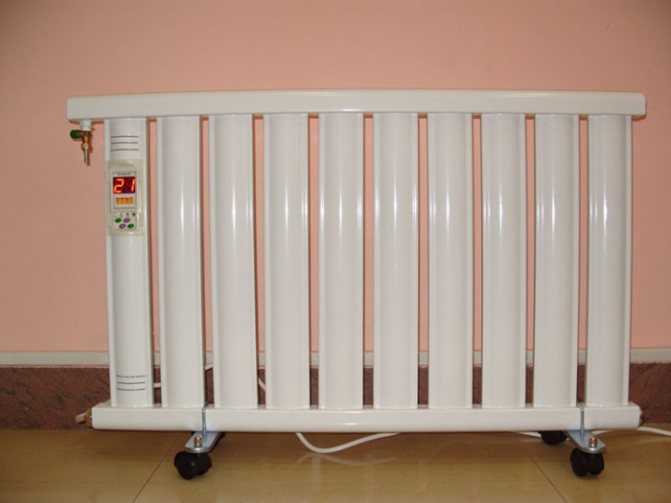

The power of such devices is 1.0-2.5 kW. They are equipped with a temperature sensor and a relay, with the help of which the temperature regime is set. Having reached the set temperature, the relay turns off the power supply. When it cools down, the electricity supply is automatically turned on.
Maximum case temperature +60 ° C. So it is impossible to burn yourself on him.True, this heater fills the rooms of the house with warmth for a very long time. Plus, it has large dimensions.
Convector
In terms of their dimensions, convectors are much inferior to oil radiators. This is a flat device that is usually hung on the wall under the window. There are also floor options on sale.
The principle of its operation is as follows: in the body of the device there are several slots (top and bottom). A heating element in the form of a heating element is installed at the bottom inside. From the lower slots, cold air enters the housing, where it passes through the heating element.
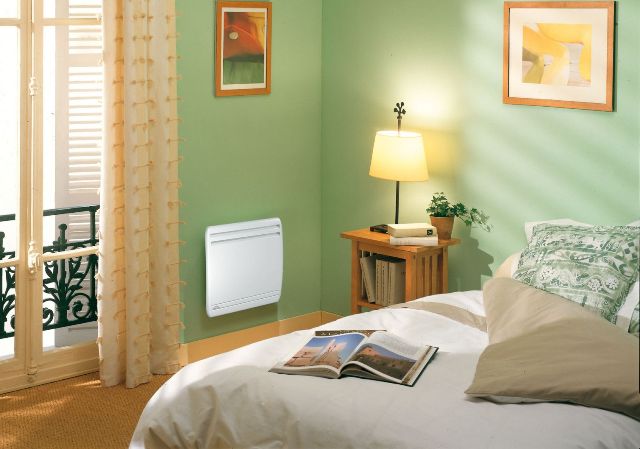

The air heats up, rises and exits through the upper slots into the room. Purely physical laws apply, therefore, the lower the convector is installed, the more efficiently it will work.
Fan heaters
This type of home heater is the most affordable, cheapest and most convenient. The device is small in size, quickly heats up a room, especially a small volume. According to the installation method, such a device can be wall-mounted, floor-standing.
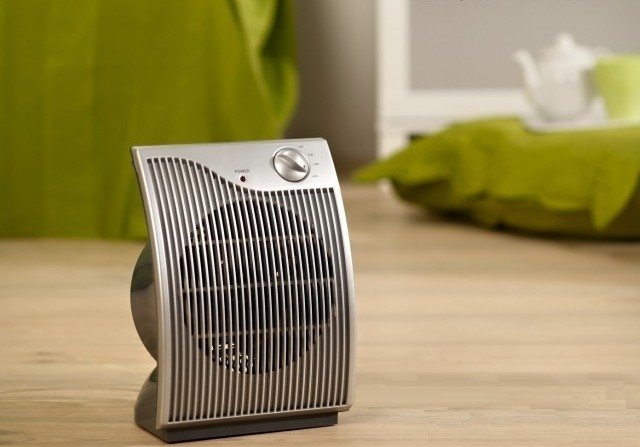

A spiral is installed in the design of the heater, to which an electric current is supplied. A fan is installed behind the spiral, which supplies air to the heating zone. The spiral heats up and heats up the air passing through it.
At the same time, all models are equipped with a rotary mechanism, with the help of which the device itself rotates around an axis, thereby uniform distribution of heat throughout the entire volume of the room.
Infrared heater
This is the most advanced and economical option. And if we are talking about home heaters with a high energy saving rate, then this is exactly what they are. But one point needs to be made here.
Experts say that using infrared heaters as the main source of heat is not worth it. But as an additional option, this is the optimal solution.
The bottom line is that energy-saving infrared heating devices work on the principle of solar radiation. That is, the air itself does not heat up from infrared rays. Objects on which they fall are heating up.
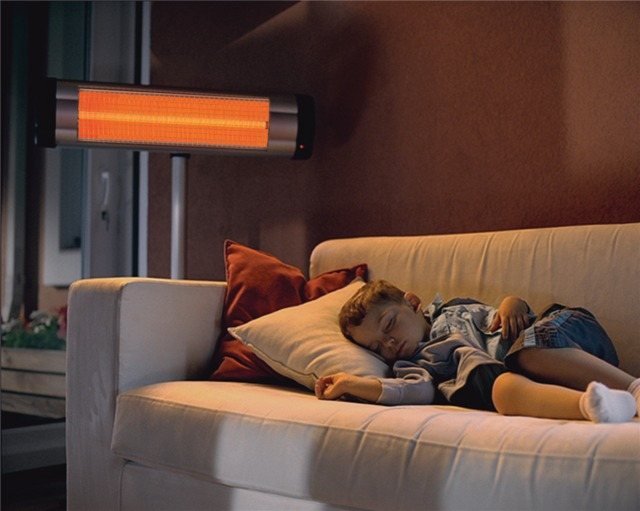

That is why it is so important to correctly direct the radiation so that it does not fall on the person. For example, do not point it at a sofa or armchairs, in the area of the table where the chairs are located.
Energy saving electric boilers for home
Climatic offers a wide range of electric boilers of various capacities. Read the information or call our consultants to select the required boiler model.
An electric heating boiler consists of a heat exchanger, a block of heating elements, a control unit and control and safety devices. Some electric boilers are equipped with a circulation pump, expansion tank, safety valve and filter. The electrically heated coolant circulates through the system of pipes and radiators, providing heating of the premises, as well as heating the water in the boiler. An electric double-circuit boiler is used for heating and hot water supply, a single-circuit one is used only for heating a house, as well as for a warm floor.
Compared to boilers using other types of fuel, electric boilers are cheaper, more compact, safe and quiet. Connecting electric boilers is much simpler and more inexpensive than other types of boilers. Due to their compact size and low weight, electric boilers are wall-mounted, do not require a separate boiler room and installation is allowed in utility or utility rooms, storerooms, in the kitchen, in the basement, and even in living rooms.
Electric boilers are easy to operate and do not create harmful emissions and odors, do not require constant maintenance, expensive cleaning and regular purchases of fuel.
Dependence on the stable availability of electricity and high requirements for the quality and reliability of electrical wiring.You should also take into account the rather high cost of electricity. For an informed decision on the purchase of an electric boiler, it is recommended to make a preliminary calculation of the cost of electricity.
240 days X 8 hours a day X boiler power X cost of 1 kW of electricity
Electric boilers with power up to 12 kW are available in single-phase (220 V power supply) and three-phase (380 V power supply), and boilers with a power of more than 12 kW are only three-phase. Most electric boilers with a capacity of more than 6 kW allow multi-stage power regulation.
To select a specific model of an electric boiler, you can contact the consultants of the Thermomir company. Remember that in addition to the boiler itself, it is necessary to purchase other elements of a full-fledged heating and water supply system (radiators, pipes, pumps, thermostats, a boiler and much more), therefore, it is better to entrust the selection of equipment and its complete set to professionals.
Manufacturers
- Boilers "Galan" are popular. Russian-made equipment. Components supplied from abroad are used. The devices are self-controlled, available.
- "Nevsky". They are used in closed heating systems. The automation sets the required temperature parameters, the device provides comfortable conditions. When the set temperature is reached, the device turns off until it cools down a little. The boiler from has a reliable assembly, accessories.
- Import manufacturer Dakon (Czech Republic). Units with heaters from the Dakon company, there are about 30 models. Models with additional equipment are available - circulation pump, expansion tank.
- Kospel boiler (Poland). It is used in single-circuit heating systems.
Electrode boilers
Such models belong to energy-saving heating equipment. They can perform the function of both main and auxiliary devices, but they can be installed only on closed-loop systems. Electrode boilers can be mounted in cascades, which makes it possible to install mini boiler rooms serving several buildings.
The high cost of the equipment under consideration, in comparison with the heating elements counterparts, inhibits the rapid popularization of energy-saving boilers. Not everyone wants to look into the future, but the immediate benefit is noticeable immediately. Therefore, not everyone thinks about the further possibility of saving energy. But in vain.
Electrode boilers are:
- high efficiency - up to 99%;
- good heat dissipation at low power;
- durability provided by design features;
- maximum compactness;
- modern automation responsible for safety and maintaining optimal temperature conditions in the house.
The quality of electrode boilers is confirmed by the use of their principle of operation in heating systems located at the objects of the defense industry. For example, such devices were installed on submarines and ships.
Electrode boilers have their disadvantages, including the requirement to constantly maintain the resistance of the energy carrier and poor compatibility with some materials for the manufacture of radiators and heating pipes. But on assurances of experts, these shortcomings are completely removable. So the "weak link" of the boiler is only its high cost, which will be recouped in the near future.
Types of IR heaters
When it comes to infrared heaters for the home, ordinary people usually mean film appliances with carbon elements. They use the one hundred percent principle of infrared radiation.
Heating elements
But experts say that radiation can also come from electric heaters of a spiral or heating element type, if a reflective screen made of stainless steel or aluminum is installed behind the heating element.
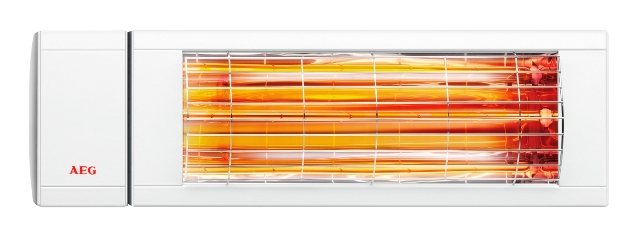

True, in these devices the main flow of thermal energy is air convection.
Gas
The same can be said for gas heaters. These are special designs, which include perforated plates made of heat-resistant material. A gas-air mixture is burned on the surface of these plates, which emits a large amount of infrared rays.
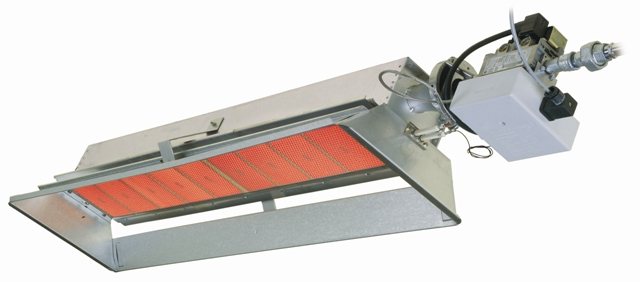

These are high power heaters, so they are not used in homes.

